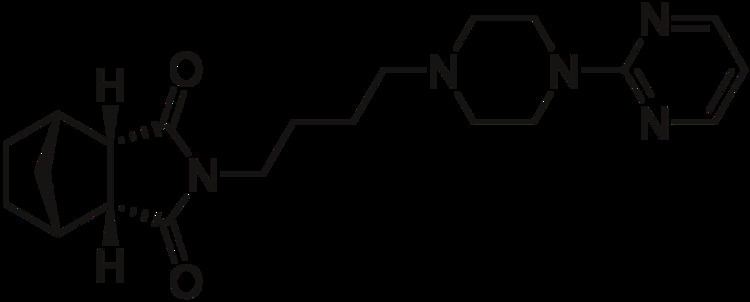Trade names Sediel ATC code none | Routes of
administration Oral | |
 | ||
AHFS/Drugs.com International Drug Names Legal status In general: ℞ (Prescription only) Biological half-life 2-3 hours (3-5 hours for active metabolite, pyrimidinylpiperazine) | ||
What does tandospirone mean
Tandospirone (Sediel), also known as metanopirone, is an anxiolytic and antidepressant drug used in China and Japan, where it is marketed by Dainippon Sumitomo Pharma. It is a member of the azapirone class of drugs and is closely related to other azapirones like buspirone and gepirone.
Contents
Medical uses
Tandospirone is most commonly used as a treatment for anxiety and depressive disorders, such as generalised anxiety disorder and dysthymia respectively. For both indications it usually takes a couple of weeks for therapeutic effects to be start being seen, although at higher doses more rapid anxiolytic responses have been seen. It has also been used successfully as a treatment for bruxism.
Tandospirone has also been tried, successfully, as an adjunctive treatment for cognitive symptoms in schizophrenic individuals.
Side effects
Common adverse effects include:
Adverse effects with unknown frequency include:
It is not believed to be addictive but it is known to produce mild withdrawal effects (e.g. anorexia) after abrupt discontinuation.
Pharmacology
Tandospirone acts as a potent and selective 5-HT1A receptor partial agonist, with a Ki affinity value of 27 ± 5 nM and approximately 55-85% intrinsic activity. It has weak and clinically negligible affinity for the 5-HT2A (1,300 ± 200), 5-HT2C (2,600 ± 60), α1-adrenergic (1,600 ± 80), α2-adrenergic (1,900 ± 400), D1 (41,000 ± 10,000), and D2 (1,700 ± 300) receptors, and is essentially inactive at the 5-HT1B, 5-HT1D, β-adrenergic, and muscarinic acetylcholine receptors, serotonin transporter, and benzodiazepine allosteric site of the GABAA receptor (all of which are > 100,000). There is evidence of tandospirone having low but significant antagonistic activity at the α2-adrenergic receptor through its active metabolite 1-(2-pyrimidinyl)piperazine (1-PP), however.
